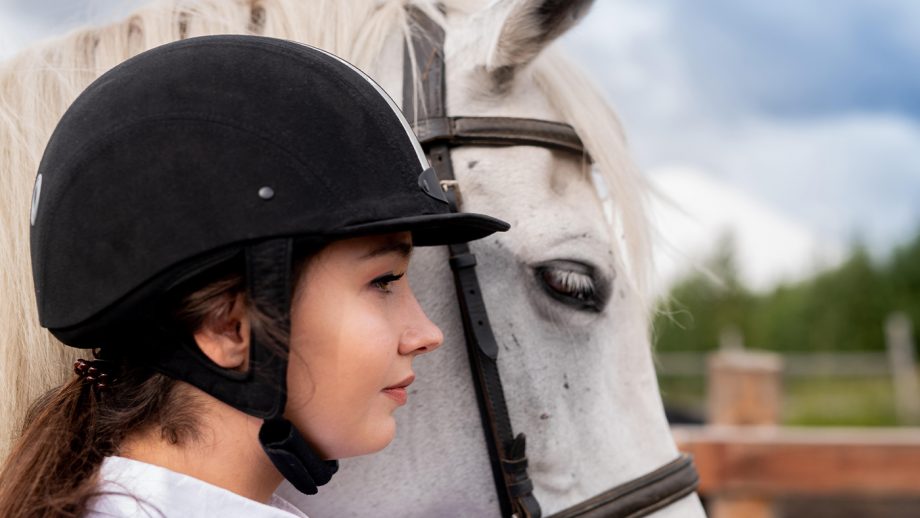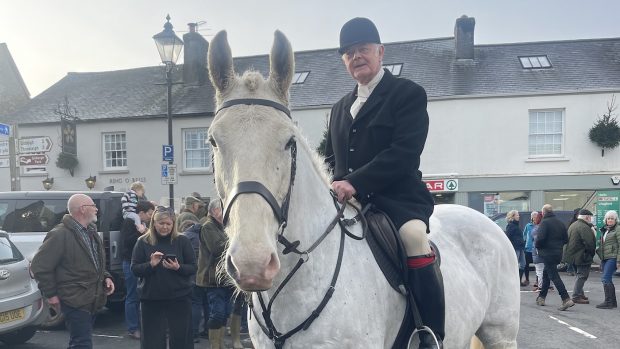Here is a reminder of everything you need to know about the current riding hat rules across the various equestrian governing bodies.
Current riding hat rules for competition
British Eventing (BE), British Riding Clubs and the Pony Club unified helmet standards in 2018 so that a single “hat tag” is accepted across all three organisations’ events. The ‘pink’ coloured tag for 2024 means riders now require just one tag to show their helmet is approved to the required standard for use in competition.
The standards accepted by each governing body are as follows:
British Eventing, Pony Club, British Riding Clubs and British Team Chasing
British and European: PAS 015 (2011), VG01.040 2014-12 or BS EN1384:2023, all with BSI Kitemark or Inspec IC Mark
American: ASTM F1163 15 or 23 with SEI Mark or SNELL 2016 or 2021
Australia and New Zealand: AS/NZS 3838 2006 onwards with SAI Global mark
British Dressage
British: All PAS 015 (2011 and subsequent updates)
European: VG1 or EN1384:2023
American: SNELL E2016, E2021, ASTM F1163 2015 and subsequent updates
Australian and New Zealand: AS/NZS 3838 2006 onwards
British Showjumping
British and European: PAS 015 (2011), VG1 provided they are BSI Kitemarked
American: All SEI ASTM F1163 04a onwards and SNELL E2016.
Australian and New Zealand: AS/NZS 3838 2006 onwards.
Useful additional information
British Eventing
- Cross-country protective headwear is a jockey skull of an even round or elliptical shape with a smooth or slightly abrasive surface, having no peak or peak type extensions. Noticeable protuberances above the eyes or to the front not greater than 5mm, smooth and rounded in nature are permitted. It must also comply with the ‘Protective Headwear’ criteria and be tagged as set out above. A removable hat cover with a light flexible peak may be used.
Pony Club
- For cross-country riding at all levels including eventing, tetrathlon, horse trials, pony racing (whether it be tests, rallies, competition or training) and mounted games competitions, a jockey skull cap must be worn with no fixed peak, peak type extensions or noticeable protuberances above the eyes or to the front, and should have an even round or elliptical shape with a smooth or slightly abrasive surface, having no peak or peak type extensions. Noticeable protuberances above the eyes or to the front not greater than 5mm, smooth and rounded in nature are permitted. A removable hat cover with a light flexible peak may be used if required.
- No recording device is permitted (e.g. hat cameras) as they may have a negative effect on the performance of the hat in the event of a fall.
- The fit of the hat and the adjustment of the harness are as crucial as the quality. Members are advised to try several makes to find the best fit. The hat should not move on the head when the head is tipped forward. Most helmet manufacturers recommend you visit a qualified BETA (British Equestrian Trade Association) fitter.
- Hats must be replaced after a severe impact as subsequent protection will be significantly reduced. Hats deteriorate with age and should be replaced after three to five years depending upon the amount of use.
- Hats, must be worn at all times (including at prize-giving) when mounted with a chinstrap fastened and adjusted so as to prevent movement of the hat in the event of a fall.
- For showjumping hat covers, if applicable, shall be dark blue, black or brown only. Branch/Centre team colours are permitted for team competitions.
- For dressage hats and hat covers must be predominately black, navy blue or a conservative dark colour that matches the rider’s jacket for area competitions or above. The Pony Club hat silk is also acceptable.
- For mounted games hat covers, if applicable, shall be dark blue, black or brown only
- The official steward/organiser may, at his discretion, eliminate a competitor riding in the area of the competition without a hat or with the chinstrap unfastened or with a hat that does not comply with these standards.
Riding Club
- Only a jockey skull of an even round or elliptical shape with a smooth or slightly abrasive surface, having no peak or peak type extensions may be worn for any cross-country phase. Noticeable protuberances above the eyes or to the front, not greater than 5mm, smooth and rounded in nature are permitted. It must also comply with the ‘protective headwear’ criteria and be tagged as set out above. A removable hat cover with a light flexible peak may be used.
- Skullcap hats must be worn with an appropriate colour silk for that discipline. For Quadrille competitions, hats of the above standard are mandatory.
- Competitors are strongly advised to check their hats regularly and to replace them if damaged or following a fall. It is recommended that hats are replaced every three to five years depending on usage.
- Please note: for the Quadrille competition, no alterations, protrusions or additions are to be made to a hat under any circumstances.
British Dressage
- Hats that are completely mirrored are not permitted.
- Top hats are no longer permitted at national and international competitions. This includes service hats that do not comply with regulation.
- If a hat comes off during a dressage test, it must be replaced immediately; the rider may dismount or the hat may be handed to them. The test will be restarted at the beginning of the movement during which it came off. There will be no penalty for error of course, but if the hat is not replaced the judge is to eliminate the competitor.
- Harnesses must be correctly fastened at all times whilst mounted.
- Competitors are strongly recommended to check their hats regularly and to replace them if damaged, or following a fall.
- If a rider starts their test without wearing the correct headgear, the judge is to ring the bell and instruct the rider to dismount and leave the arena. At the discretion of the organiser and the judge, the rider may restart the test once properly attired. If a rider fails to comply with the instruction, the organiser is to eliminate the competitor from all classes on that day. This will also apply if, as a result of a spot-check, a rider’s hat is found not to comply with the required standard.
You might also be interested in:
British Eventing (BE), British Riding Clubs and the Pony Club have unified helmet standards

13 riding hats that are worth your attention

5 helmets that incorporate MIPS technology

7 adjustable riding helmets to help you find the perfect fit

8 riding hats you can get your hands on for less than £100

10 riding hats that are perfect for children

2018 hat rules revealed: single hat tag plus change to standard

Subscribe to Horse & Hound this spring for great savings
Horse & Hound magazine, out every Thursday, is packed with all the latest news and reports, as well as interviews, specials, nostalgia, vet and training advice. Find how you can enjoy the magazine delivered to your door every week, plus options to upgrade your subscription to access our online service that brings you breaking news and reports as well as other benefits.





